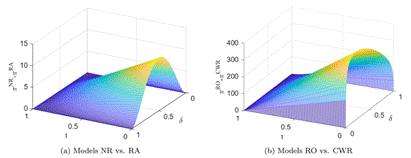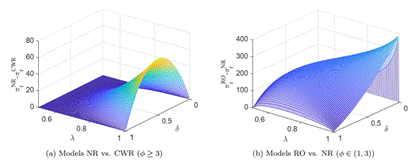On August 2, Jiang Wu, Professor at the SIM, Wuhan University, and Liuxin Zou, a doctoral student of the SIM, Wuhan University, published a paper entitled withThe anti-collusion dilemma: Information sharing of the supply chain under buyback contractsin Transportation Research Part E: Logistics and Transportation Review, which is a A-level international journal among the Recommended List of High Quality Journals by the Federation of Management Societies of China (FMS). This paper explains the supply chain information sharing based on buyback contracts in the anti-collusion dilemma.
In this paper, game theory, numerical simulation and other research methods are comprehensively used, focusing on supply chain information sharing in explicit collusion and tacit collusion. Two or more companies exchange information horizontally via pricing software to set the same retail price and obtain more revenue, which is an explicit collusion prohibited by law. However, tacit collusion is usually not regarded as illegal behavior, that is, competitors coordinate prices without an actual agreement. For example, retailers can use wholesale price as price signal to infer competitors' price information and set the same retail price. Collusion cases frequently occur in oligopoly markets, and the widespread use of buyback contracts further aggravates collusion among retailers.
According to actual collusive cases, this paper focuses on two dimensions: the collusive patterns (i.e., explicit collusion and tacit collusion) and the types of information sharing (i.e., only horizontal information sharing; horizontal and vertical information sharing). Based on the above two dimensions, this paper establishes four models, and uses the method of embedding the single-cycle model into the infinitely repeated game model to analyze different types of collusion supply chains. Firstly, the equilibrium solutions in the supply chain with explicit collusion and tacit collusion are solved respectively (as shown in Table 1 and 2). Then, the model is simulated numerically, and the profit of supply chain in buyback contracts and retailer's preference for collusion model are compared (as shown in Figure 1 and Figure 2). Finally, the robustness of the model is checked.

Table 1 Equilibrium solutions in explicit collusion.

Table 2 Equilibrium solutions in tacit collusion.

Figure 1 Comparison of the supply chain’s profits in buyback contracts.

Figure 2 Retailers’ preference for collusion.
This paper points out that retailers are unwilling to share information vertically in the case of explicit collusion. However, retailers will choose vertical information sharing in tacit collusion with low demand uncertainty. The results of numerical experiments show that although explicit collusion usually improves the retailer's profit, when the demand uncertainty is low, it is more willing to choose tacit collusion to identify the price signal. Finally, the robustness check proves the robustness of the conclusion. To a certain extent, the above conclusions fill the research gap of retailer collusion in buyback contracts, and the findings can provide some enlightenment and reference for supply chain management in buyback contracts.
Links to the full article of the paper:https://doi.org/10.1016/j.tre.2021.102413